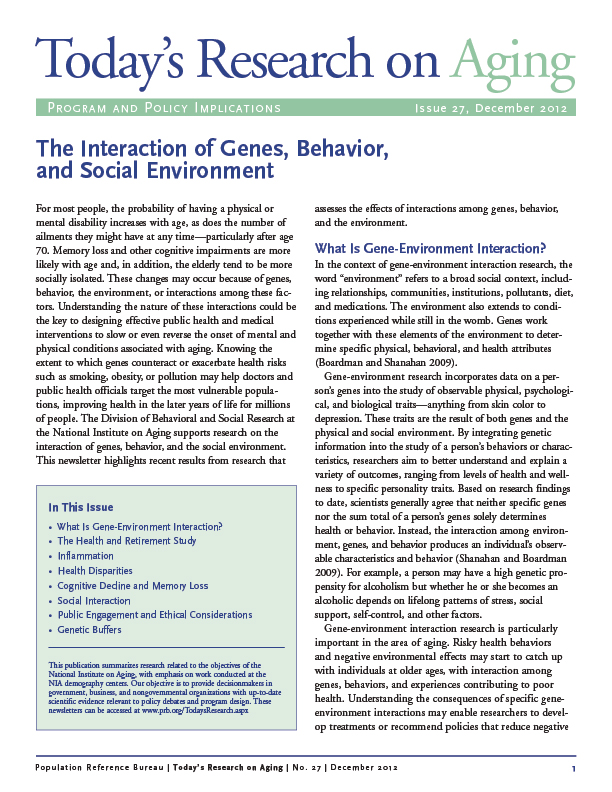For most people, the probability of having a physical or mental disability increases with age, as does the number of ailments they might have at any time—particularly after age 70.
Memory loss and other cognitive impairments are more likely with age and, in addition, the elderly tend to be more socially isolated. These changes may occur because of genes, behavior, the environment, or interactions among these factors. Understanding the nature of these interactions could be the key to designing effective public health and medical interventions to slow or even reverse the onset of mental and physical conditions associated with aging. Knowing the extent to which genes counteract or exacerbate health risks such as smoking, obesity, or pollution may help doctors and public health officials target the most vulnerable populations, improving health in the later years of life for millions of people. The Division of Behavioral and Social Research at the National Institute on Aging supports research on the interaction of genes, behavior, and the social environment.
This newsletter highlights recent results from research that assesses the effects of interactions among genes, behavior, and the environment. It provides an overview of current findings on the role of inflammation, memory loss, social interaction, genetic buffers, and health disparities within these interactions.
Rachel T. Cortes is a research associate at the Population Reference Bureau; Marlene Lee is program director for Academic Research and Relations at PRB.


 ">
">